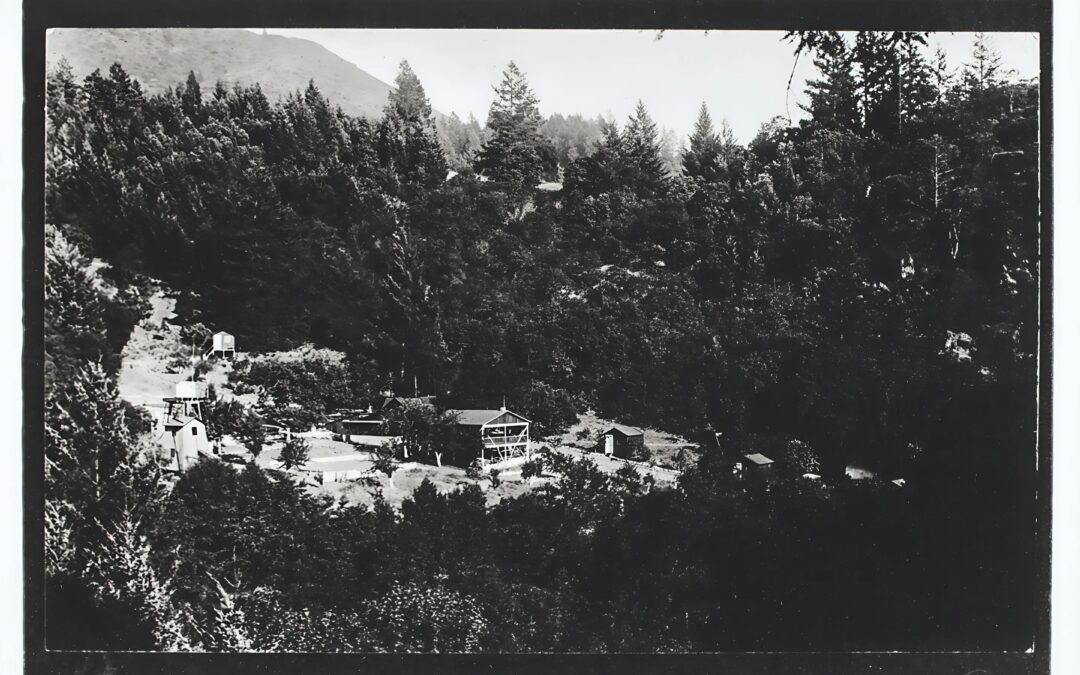by Tim Trainor (Volunteer History Docent)
Visitors of Sugarloaf Ridge State Park enter via Adobe Canyon Road off Highway 12 in Kenwood. As they drive up the canyon to enjoy the numerous outdoor activities at the park, they pass through an area that has drawn outdoor enthusiasts and casual visitors for well over 100 years.
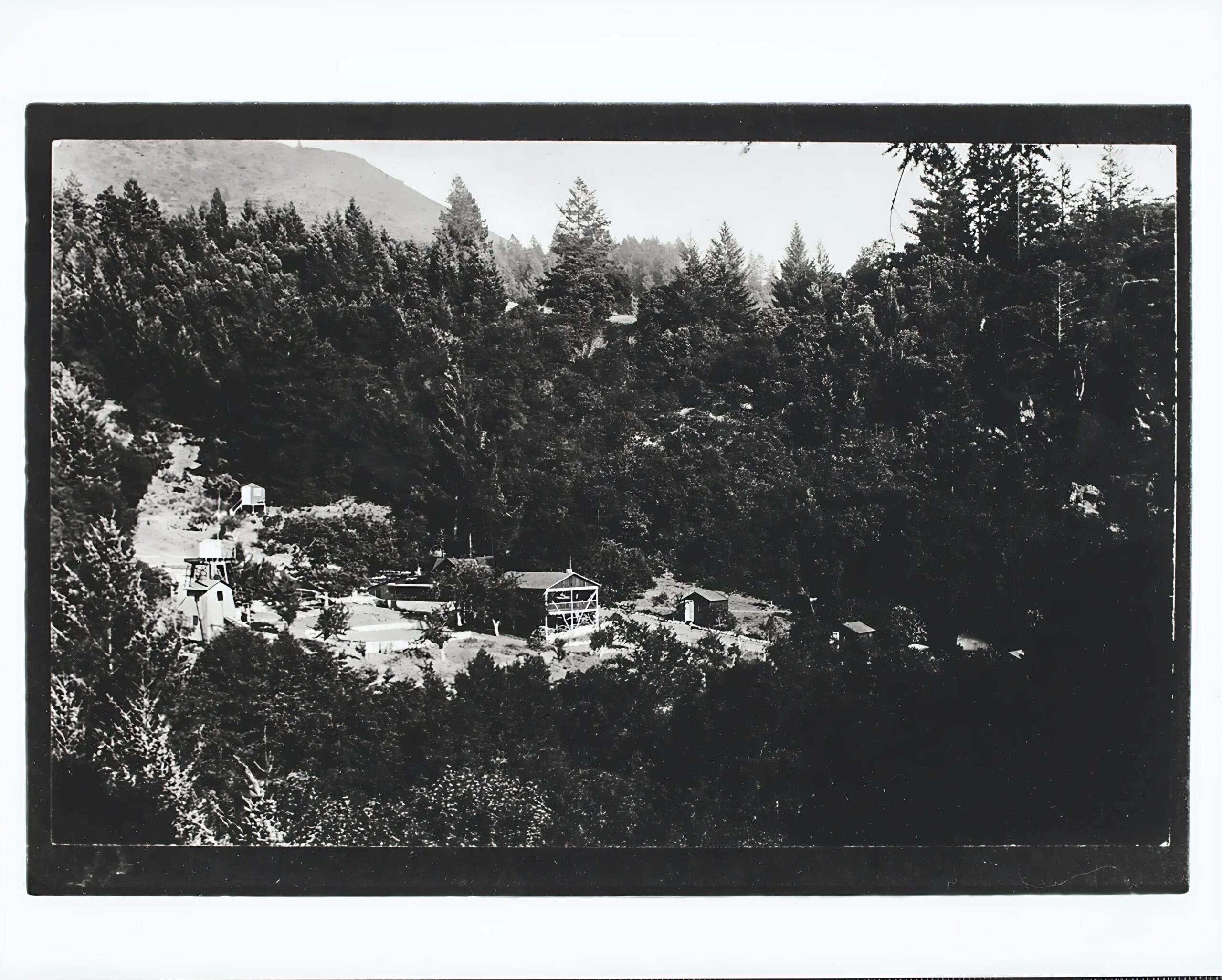
Kenwood Springs in 1924
The road was originally named Kenwood Springs Road but the name was later changed to Adobe Canyon Road in recognition of the abandoned adobe at the Hwy 12 turnoff. The adobe was demolished by 1960 and the last known photograph was taken in 1950. The unsubstantiated story is that the adobe was built by Juan Wilson to validate his land grant. The adobe was then sold to William Hood in 1861 who lived there while his mansion was being built on Pythian Road.
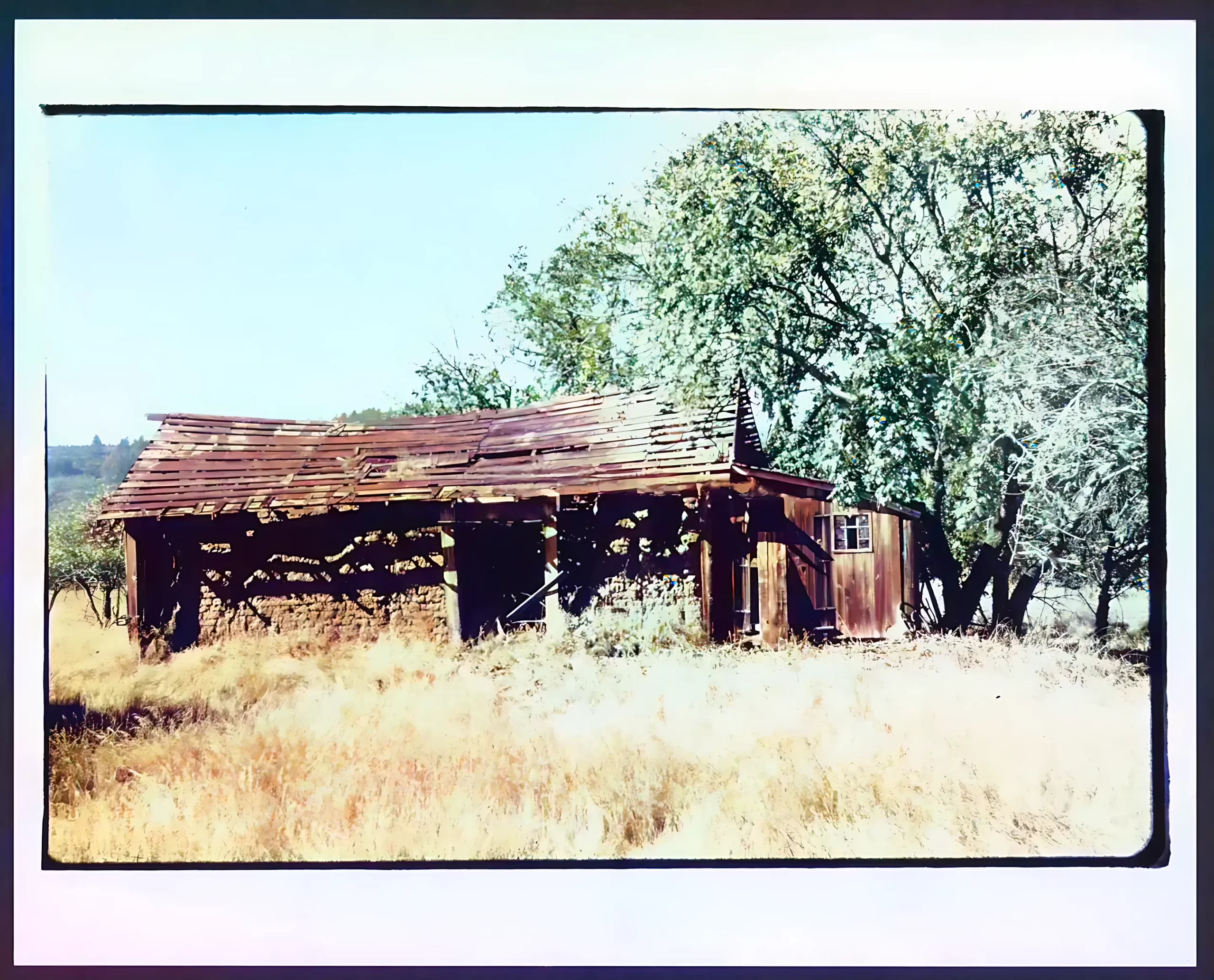
Abandoned adobe at the Hwy 12 turnoff in 1950, demolished by 1960
In 1908 the Webb family constructed a hunting lodge a mile and half up the canyon that was named Kenwood Springs. Kenwood Springs opened as a lodge in 1919 where visitors stayed in cottages and tents and enjoyed fishing, hunting and swimming for $18 a week. Every spring, the owners would build a temporary dam made mostly from creek rocks and create a big swimming hole. The icy cold waters of Sonoma Creek flowed slowly through it and one could see native trout swimming in the current.
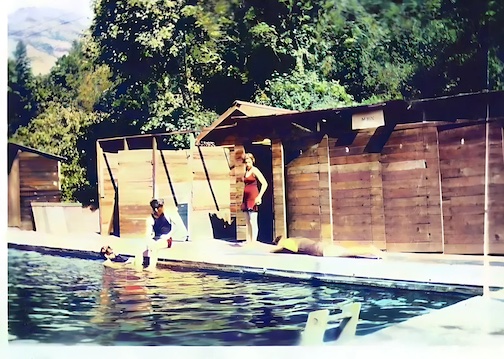
Kenwood Springs Pool, image was enhanced with AI to bring out the color
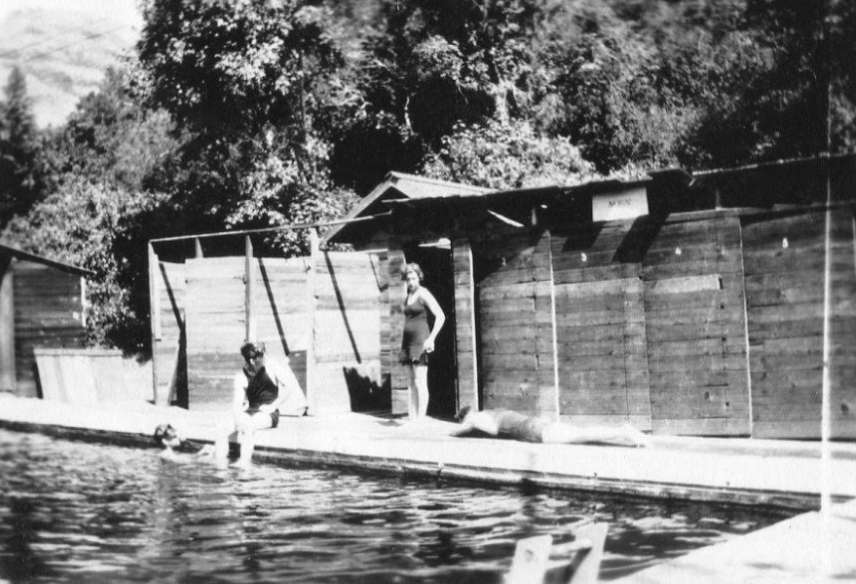
Original Image of Kenwood Springs Pool 1930
In 1915 over 15,000 trout arrived at Kenwood Station for release in Sonoma Creek to encourage tourism. At Kenwood Springs on opening day in 1923, 80-year-old Annie Schmidt from Alameda caught the daily limit of 25 trout. Mrs. Schmidt planned to return the following year to improve her angling skills.
Not all visitors were as fortunate as Mrs. Schmidt. In June, 1924 a 12-year-old boy from Kenwood drowned in one of the site’s watering tanks and in 1953 a Napa resident got lost while deer hunting east of the lodge. His body was found the next day after falling in a small canyon.
In 1926 a posse was formed at the resort to find an intruder that had been making his livelihood by destroying the crops of farmers and had evaded capture for over 6 years. The 600-pound wild boar was finally located and met his end after a fierce struggle.
The Kenwood Springs resort name was changed to the Golden Bear Lodge in 1932. Brothers Neil and Les Fashbaugh bought the property in 1948 and were the owners until 1982. The property changed hands several times and was last named the Buckley Lodge in the early 1990s.
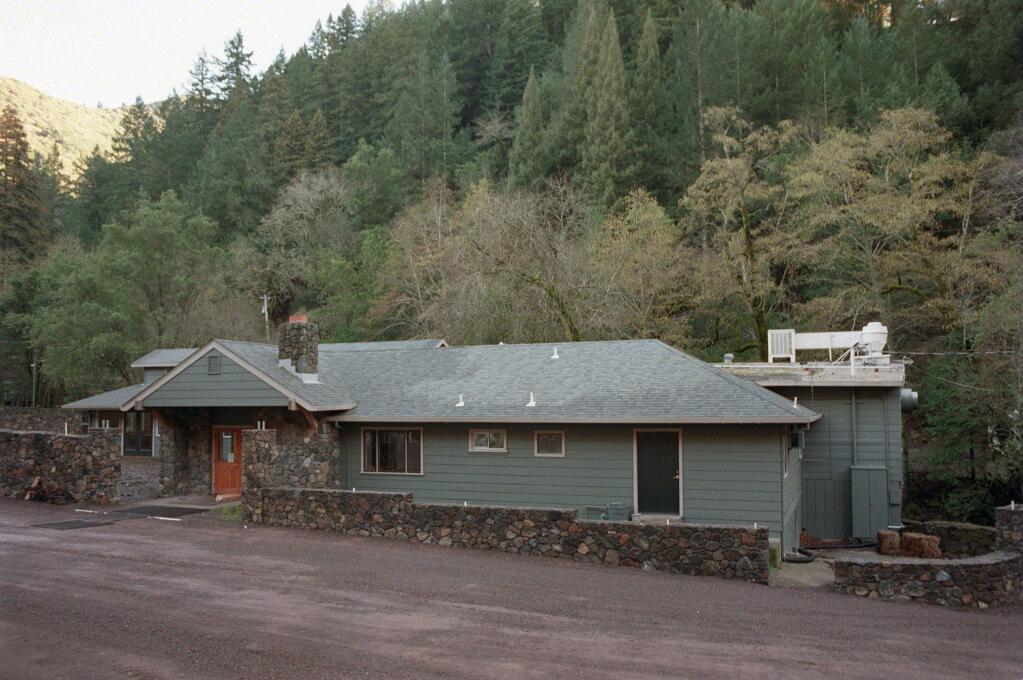
Golden Bear Lodge in the year 2000
Fires were a consistent concern of the canyon’s residents. Over the years multiple fires threatened or damaged the lodge and a fire in 2003 gutted the main building, closing the business.
At the entrance to the canyon a number of commercial businesses operated over the years. The Shuckler family purchased the property at the entrance of Adobe Canyon Road in 1920. They built a gas station and bar in 1935 (The Golden Bear Service Station). The family still owns the property.
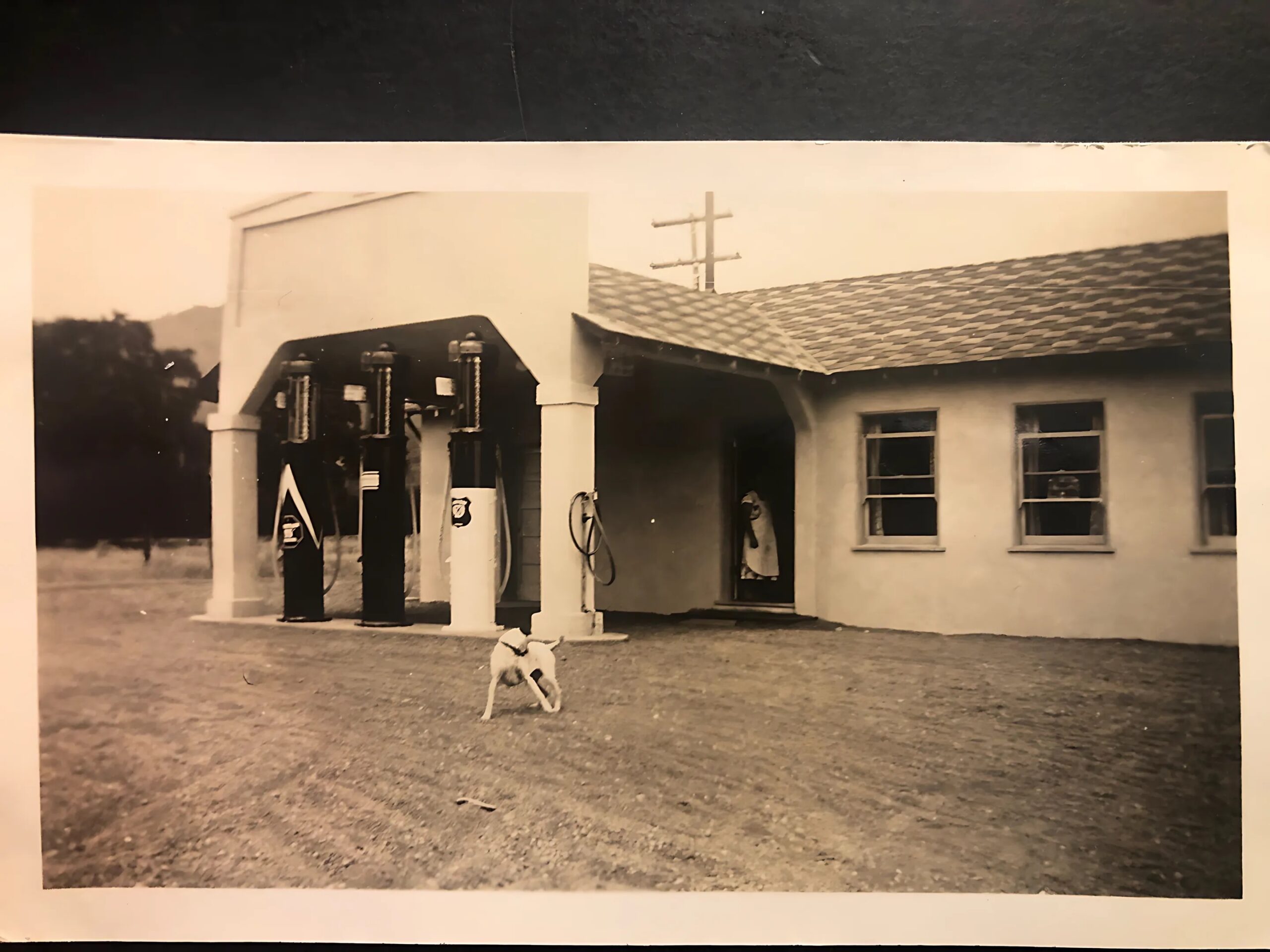
The Golden Bear Service Station Picture of the empty station, 1936
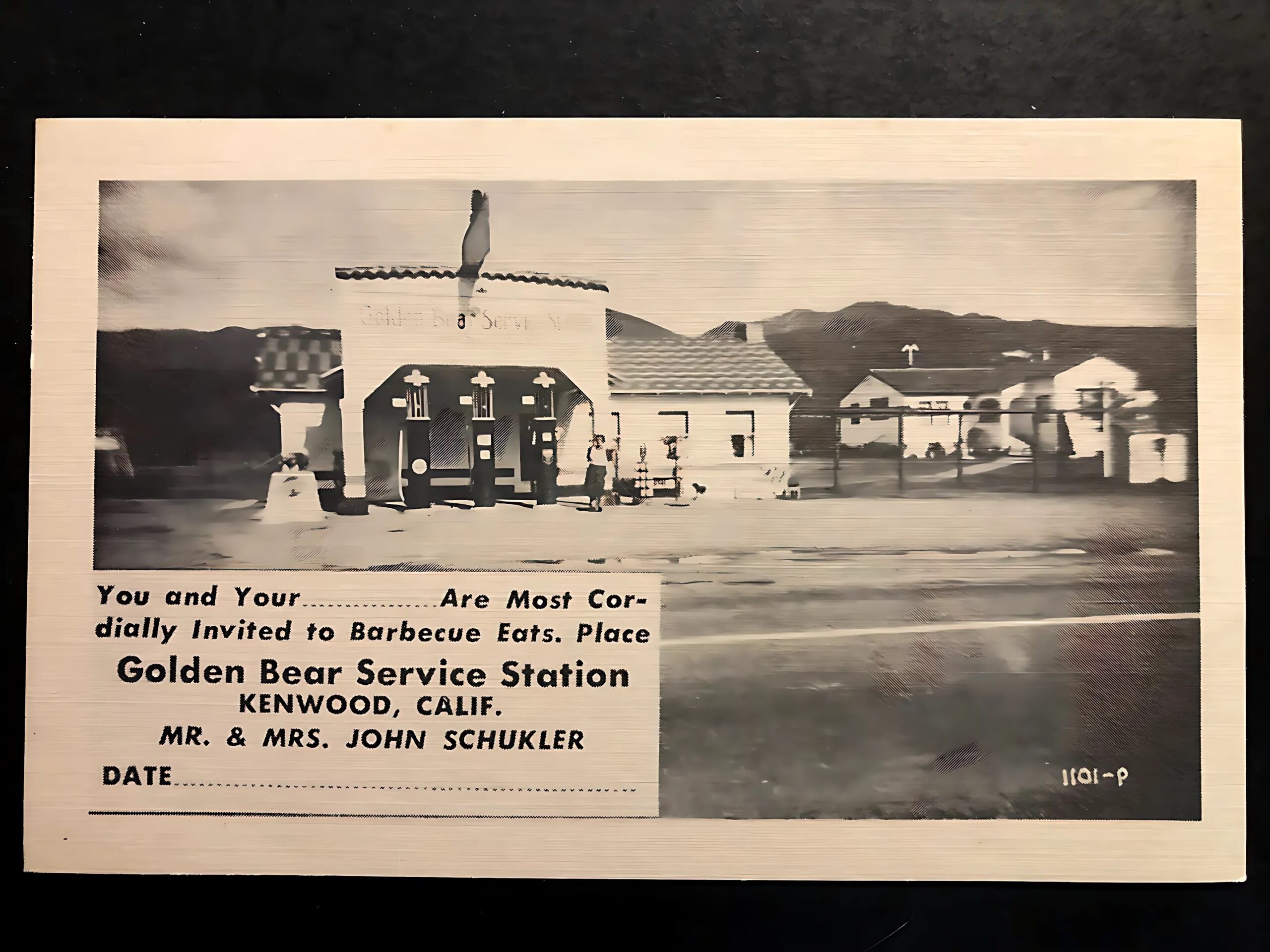
Invitation to the Golden Bear Service Station 1950 from Mr. and Mrs. John Schukler
The service station became the Vineyards Inn and then Tips Roadside. Recently the site has become the Golden Bear Station, a fitting homage to one of the canyon’s primary draws in the early years.
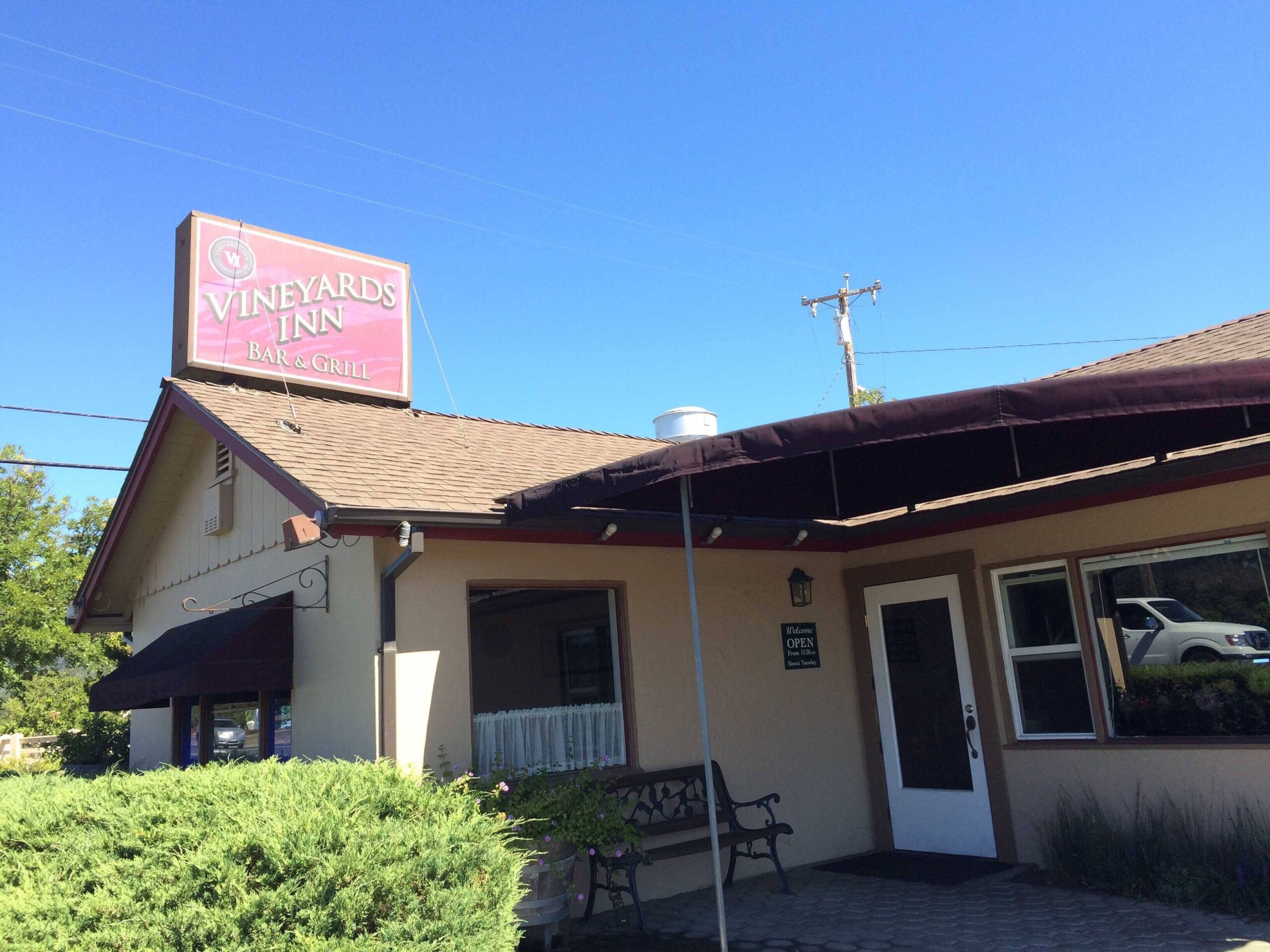
Left: Vineyard Inn before it became Tips Roadside
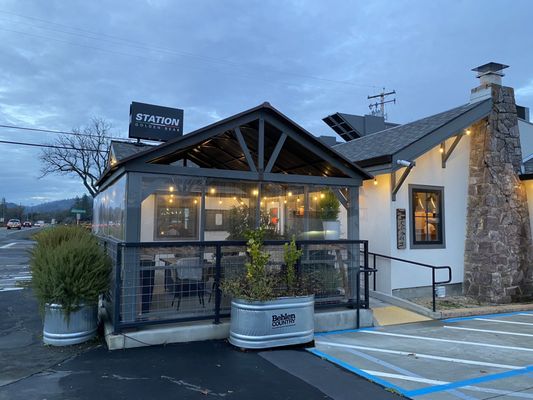
Right: Current image of the Golden Bear Station as of this year 2024
Escrito por Tim Trainor (Volunteer History Docent)
Los visitantes del Parque Estatal Sugarloaf Ridge entran por Adobe Canyon Road, desde la carretera 12 en Kenwood. Mientras conducen por el cañón para disfrutar de las numerosas actividades al aire libre del parque, pasan por una zona que ha atraído a entusiastas del aire libre y visitantes ocasionales durante más de 100 años.

Kenwood Springs en 1924
La carretera originalmente se llamaba Kenwood Springs Road, pero el nombre se cambió a Adobe Canyon Road en reconocimiento al adobe abandonado en el desvío de la carretera 12. El adobe fue demolido en 1960 y la última fotografía conocida se tomó en 1950. La historia no confirmada es que el adobe fue construido por Juan Wilson para validar su concesión de tierras. El adobe fue luego vendido a William Hood en 1861, quien vivió allí mientras se construía su mansión en Pythian Road.

Adobe abandonado en el desvío de la carretera 12 en 1950, demolido en 1960
En 1908, la familia Webb construyó un refugio de caza a una milla y media por el cañón llamado Kenwood Springs. Kenwood Springs abrió como un albergue en 1919, donde los visitantes se alojaban en cabañas y tiendas de campaña y disfrutaban de la pesca, la caza y la natación por $18 a la semana. Cada primavera, los propietarios construían una presa temporal, principalmente con rocas del arroyo, y creaban un gran hoyo para nadar. Las frías aguas del Sonoma Creek fluían lentamente a través de él y se podían ver truchas nativas nadando en la corriente.

Izquierda: Piscina de Kenwood Springs, la imagen fue mejorada con IA para resaltar el color

Derecha: Imagen original de la piscina de Kenwood Springs en 1930
n 1915, más de 15,000 truchas llegaron a la estación de Kenwood para ser liberadas en el Sonoma Creek y fomentar el turismo. En Kenwood Springs, el día de la inauguración en 1923, Annie Schmidt, de 80 años, de Alameda, pescó el límite diario de 25 truchas. La Sra. Schmidt planeaba regresar el año siguiente para mejorar sus habilidades de pesca.
No todos los visitantes fueron tan afortunados como la Sra. Schmidt. En junio de 1924, un niño de 12 años de Kenwood se ahogó en uno de los tanques de agua del lugar y en 1953, un residente de Napa se perdió mientras cazaba ciervos al este del albergue. Su cuerpo fue encontrado al día siguiente después de caer en un pequeño cañón.
En 1926, se formó una partida de búsqueda en el resort para encontrar a un intruso que había estado destruyendo las cosechas de los agricultores y había evadido la captura durante más de 6 años. El jabalí de 600 libras fue finalmente localizado y encontró su fin después de una feroz lucha.
El nombre del resort Kenwood Springs se cambió a Golden Bear Lodge en 1932. Los hermanos Neil y Les Fashbaugh compraron la propiedad en 1948 y fueron los propietarios hasta 1982. La propiedad cambió de manos varias veces y fue nombrada Buckley Lodge por última vez a principios de la década de 1990.

Golden Bear Lodge en el año 2000
Los incendios fueron una preocupación constante para los residentes del cañón. A lo largo de los años, múltiples incendios amenazaron o dañaron el albergue y un incendio en 2003 destruyó el edificio principal, cerrando el negocio.
A la entrada del cañón, varios negocios comerciales operaron a lo largo de los años. La familia Shuckler compró la propiedad en la entrada de Adobe Canyon Road en 1920. Construyeron una estación de servicio y un bar en 1935 (La Estación de Servicio Golden Bear). La familia aún es propietaria de la propiedad.

Izquierda: La Estación de Servicio Golden Bear Imagen de la estación vacía.

Derecha: Invitación a la Estación de Servicio Golden Bear 1950 del Sr. y la Sra. John Schukler.
La estación de servicio se convirtió en Vineyards Inn y luego en Tips Roadside. Recientemente, el sitio se ha convertido en Golden Bear Station, un homenaje apropiado a una de las principales atracciones del cañón en los primeros años.

Izquierda: Vineyard Inn antes de convertirse en Tips Roadside

Derecha: Imagen actual de Golden Bear Station en este año 2024

